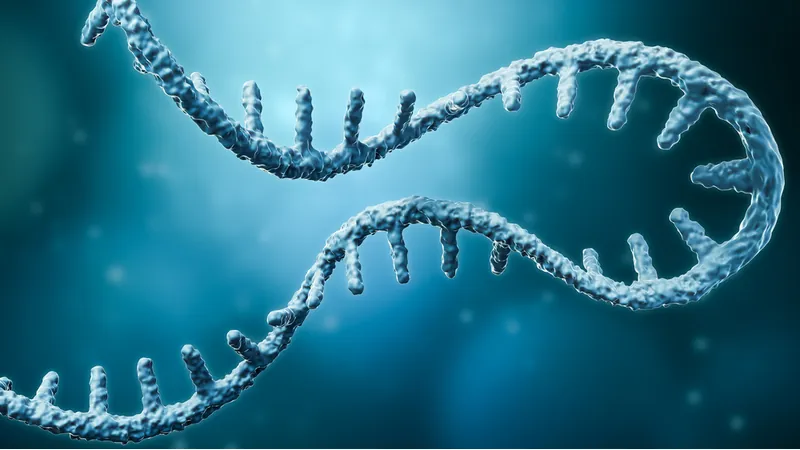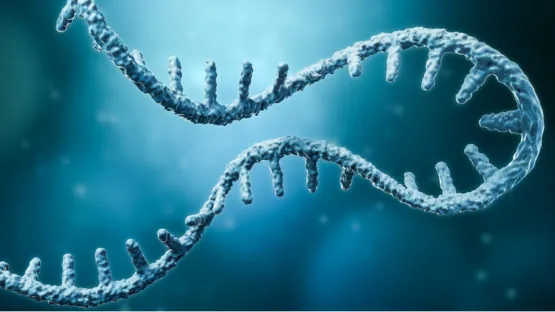New research has identified a set of long noncoding RNAs involved in inflammaging and the senescence-associated secretory phenotype (SASP) [1]. These RNAs are conserved across a range of species, including humans, and may prove a valuable avenue for controlling senescence.
Age-related RNAs
RNA can broadly be divided into protein-coding RNAs and noncoding RNAs, which have multiple different types and functions. Some have been known for a long time, while others have been discovered more recently and are less well understood. Noncoding RNAs longer than 200 nucleotides are called long noncoding RNAs (lncRNAs). A significant proportion of lncRNAs seem to be evolutionarily conserved and differentially expressed in specific cell types, but their functions are generally unknown.
To identify lncRNAs that might be involved in aging, Donghong Cai and Jing-Dong Han of the Chinese Academy of Sciences and Peking University analyzed publicly available RNA sequencing data from eleven species at different ages. The species included humans, a couple of other primates, rats, pigs, wolves, two fish, fruit flies, and nematodes. They report that protein-coding RNAs usually had more age-dependent expression than lncRNAs. However, to their surprise, they found that lncRNAs associated with aging were more strongly evolutionarily conserved than other lncRNAs.
Figuring out function
The researchers used a “guilt-by-association” approach to determine the function of these lncRNAs. That is, their function was inferred based on their coexpression with protein-coding RNAs in specific tissues. Based on this, they found that the function of lncRNAs that were downregulated with age differed between tissues, but a set of 13 lncRNAs upregulated across a range of tissues were involved in regulating the NFκB pathway. The duo dubbed these “NFκB modulating aging-related lncRNAs”, giving them the impressive acronym NFKBMARLs.
Further work on one of these, NFKBMARL-1, showed that it is upregulated during inflammation and senescence in response to NFκB. However, NFKBMARL-1 also activates NFκB by controlling the expression of NFKBIZ, a regulator of NFκB involved in the SASP. The combination of the two regulatory relationships links NFKBMARL-1 and NFκB in a positive feedback loop, though the precise dynamics await further exploration.
Activation of NFκB is a key component of the SASP. NFKBMARL-1 thus regulates the SASP via its effect on NFκB, but it may not affect senescence more generally, since senescence and the SASP are independently regulated. If so, then NFKBMARL-1 or some of the other lncRNAs identified in this study may offer a viable avenue for senomorphic therapies which, unlike senolytics, aim to modulate the SASP while leaving the beneficial effects of senescence intact.
The transcriptome undergoes global changes during aging, including both protein-coding and noncoding RNAs. Using comparative genomics, we identify aging-associated long noncoding RNAs (lncRNAs) that are under evolutionary constraint and are more conserved than lncRNAs that do not change with age. Aging-associated lncRNAs are enriched for functional elements, including binding sites for RNA-binding proteins and transcription factors, in particular nuclear factor kappa B (NFκB). Using CRISPR screening, we discovered that 13 of the aging-associated lncRNAs were regulators of the NFκB pathway, and we named this family ‘NFκB modulating aging-related lncRNAs (NFKBMARLs)’. Further characterization of NFκBMARL-1 reveals it can be traced to 29 Ma before humans and is induced by NFκB during aging, inflammation and senescence. Reciprocally, NFκBMARL-1 directly regulates transcription of the NFκB inhibitor NFKBIZ in cis within the same topologically associated domain by binding to the NFKBIZ enhancer and recruiting RELA to the NFKBIZ promoter. These findings reveal many aging-associated lncRNAs are evolutionarily conserved components of the NFκB pathway.
Conclusion
It’s far too early to say how valuable this work is or will be. If these lncRNAs offer an effective way to decouple the SASP and senescence, they may prove to be clinically valuable tools for longevity interventions. Even if that’s not the case, the identification of a set of age-related regulatory RNAs that are conserved across such a wide range of species seems like an invaluable resource for future research. Whether that is the case, and what the fruits of that research will be, only time can tell.


